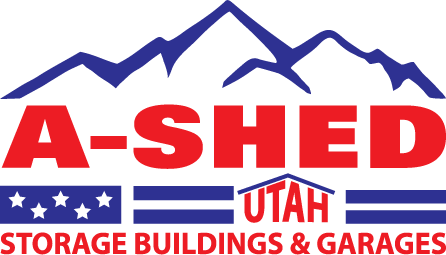 Get A Free Quote
Get A Free Quote Get A Free Quote
Get A Free QuoteIn part one of this two-part blog series, we went over some of the pros and cons of using metal as the roofing material for your storage shed. Metal is a long-lasting shed roof material that’s resistant to many risks, but those considering it also have to think about its cost and potential rust issues when making their choice.
At A-Shed USA, we’re happy to offer a wide range of storage sheds, garages and other structures to clients around Salt Lake City, plus expertise on important related topics like these. While part one of our series focused on pros and cons of metal roofs, today’s part two will shift gears and look at the basic steps for installing a metal roof on your shed – steps our team will be happy to assist you with if needed.
Firstly, you’ll need to prepare the surface on which your metal roof will be laid. This includes ensuring that the shed’s walls and rafters are secure, checking for any gaps or holes in the wall or other types of damage and patching up where needed.
You should also ensure that the area is free from debris and make sure it is level before moving on.
The first key parts of the metal roofing installation process involve edging and underlayment. The former involves attaching an edge trims to all four sides of the shed’s perimeter wall, while the latter is a moisture barrier that helps protect your shed from water damage or other damage caused by precipitation.
As you’re doing this, be sure to check for any gaps or openings that would let moisture in.
Once edging and underlayment are done, you can move onto attaching the metal panels to your shed’s surface. You’ll need to attach these using screws, which should be placed at regular intervals over the entire length of the roof.
As you’re doing this, be sure to take into account expansion and contraction of the metal due to weather changes.
Once the metal panels are secure, you may need to cut holes in them to allow for venting or other features. This should be done with precision and care to ensure that no water can enter through any of these openings. You can use power shears or tin snips to make the cuts, but be sure to wear the proper safety gear and take all necessary precautions.
Finally, the last step is to secure a ridge cap along the top of your metal roof. This will help protect it from water damage and keep it secure in all weather conditions.
And that’s it! Following these steps should give you a strong and long-lasting metal roof for your storage shed. A-Shed USA can provide more information on this and other shed-related topics, so be sure to reach out if you have any questions about a shed, garage or other custom building.